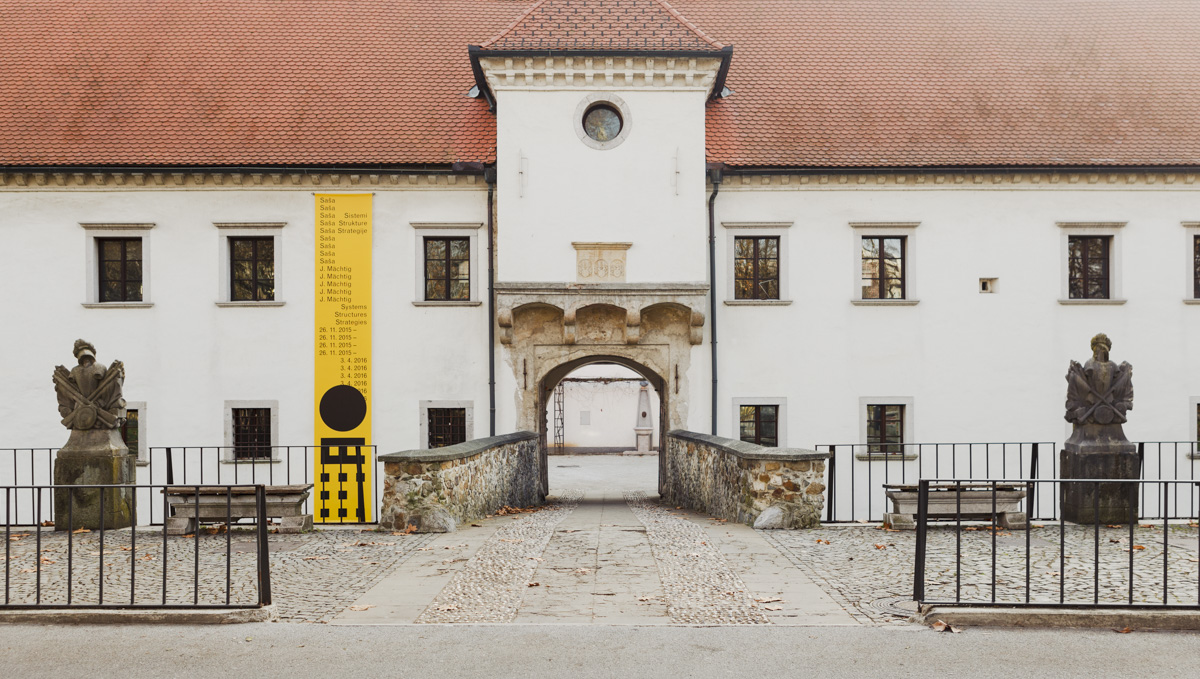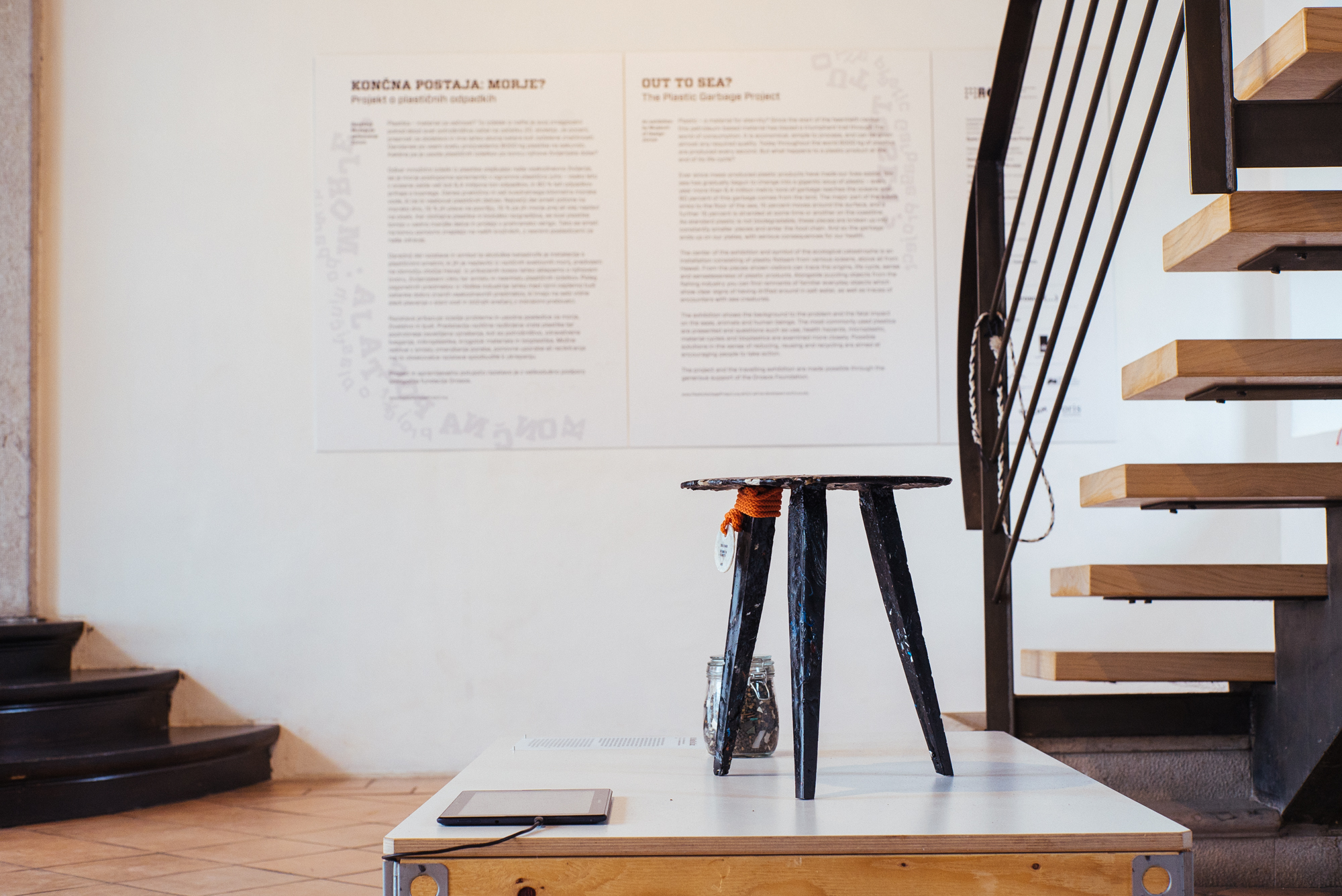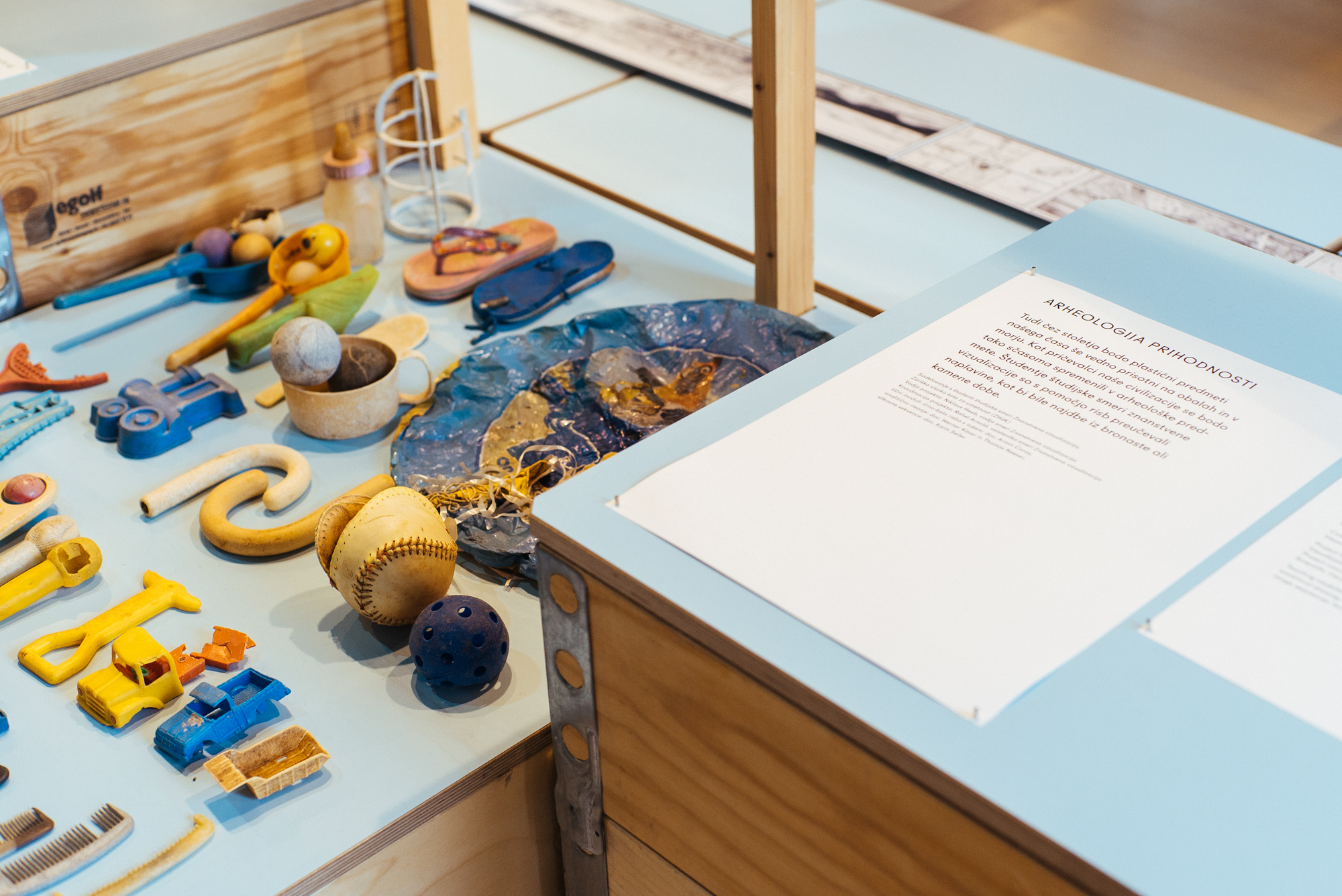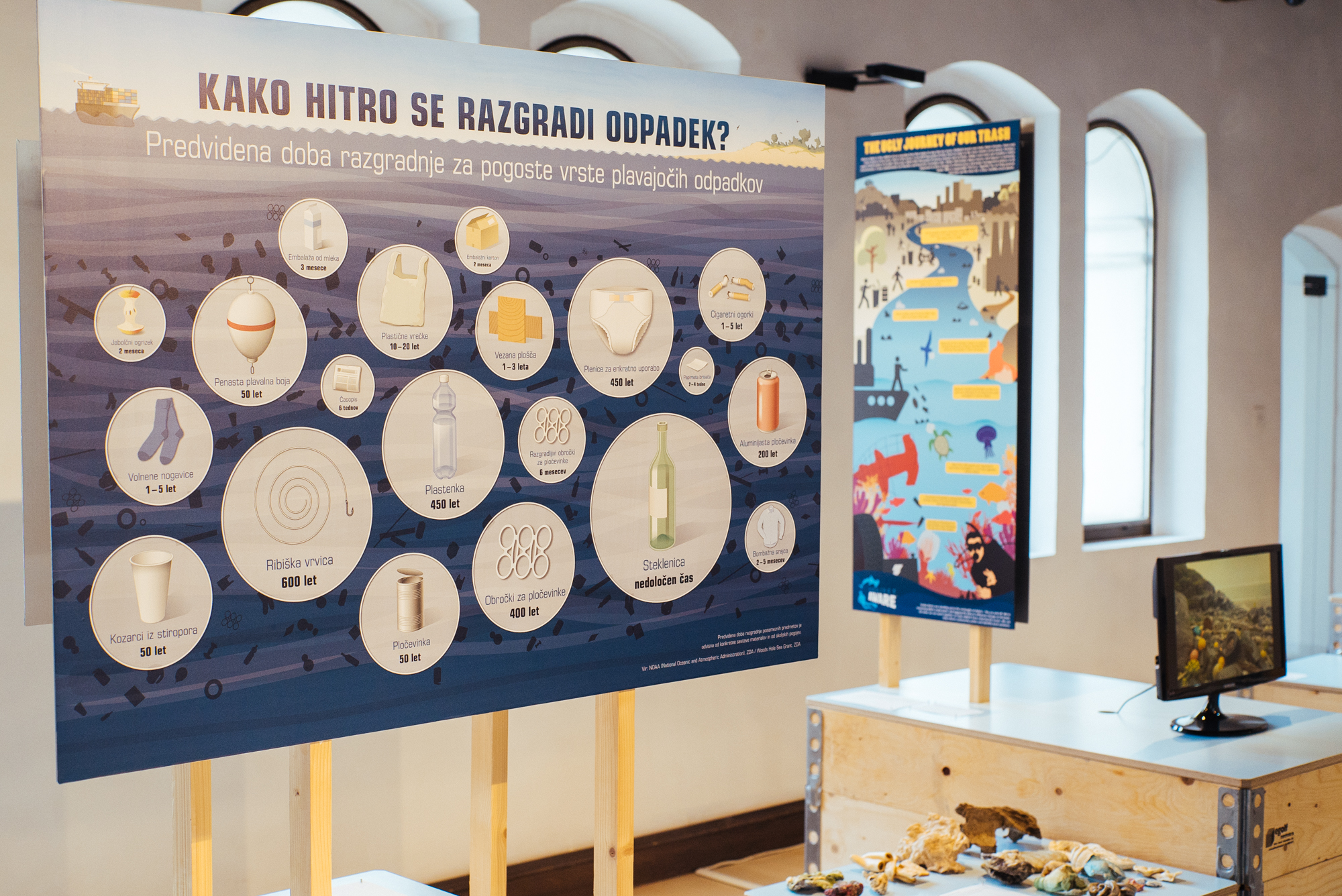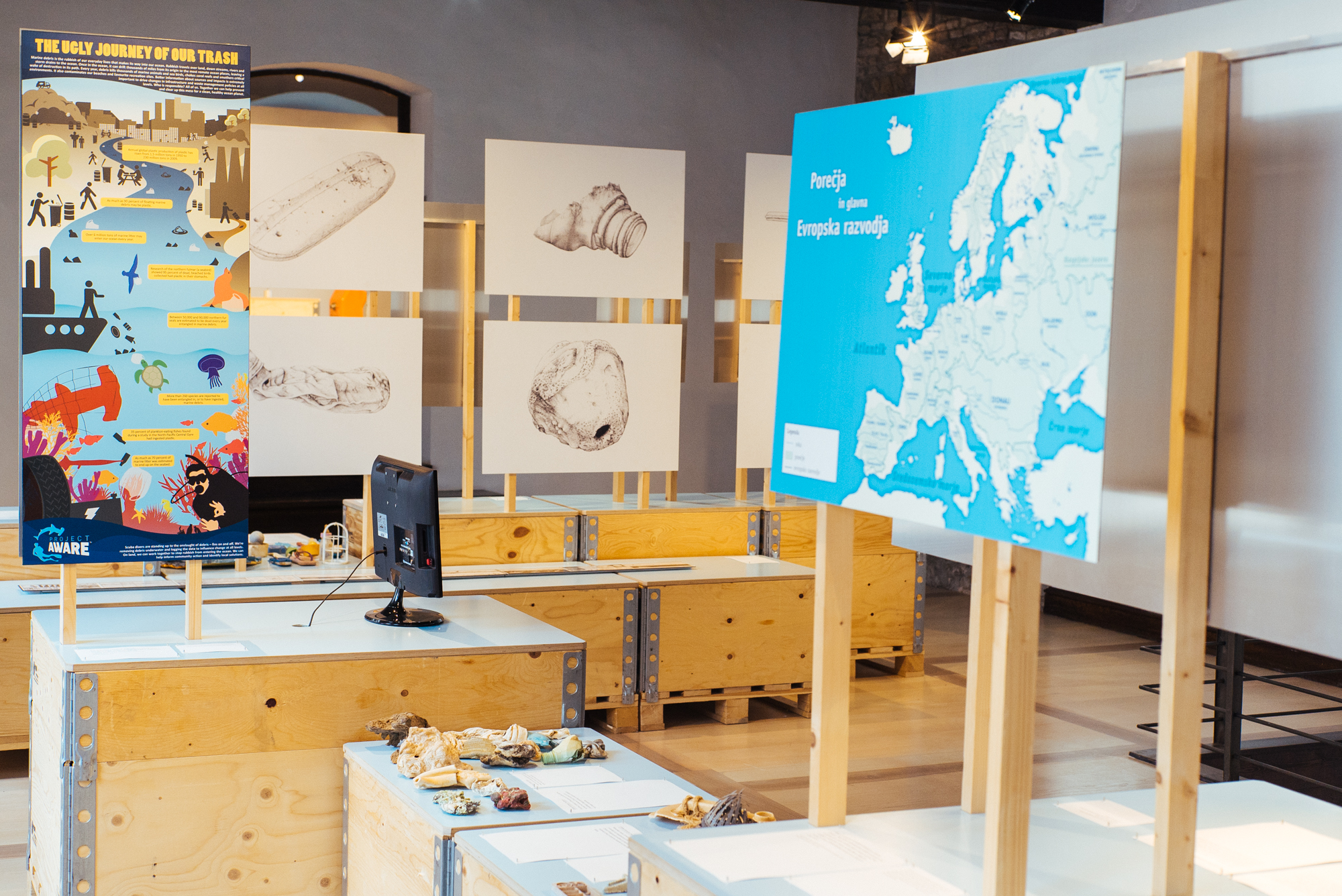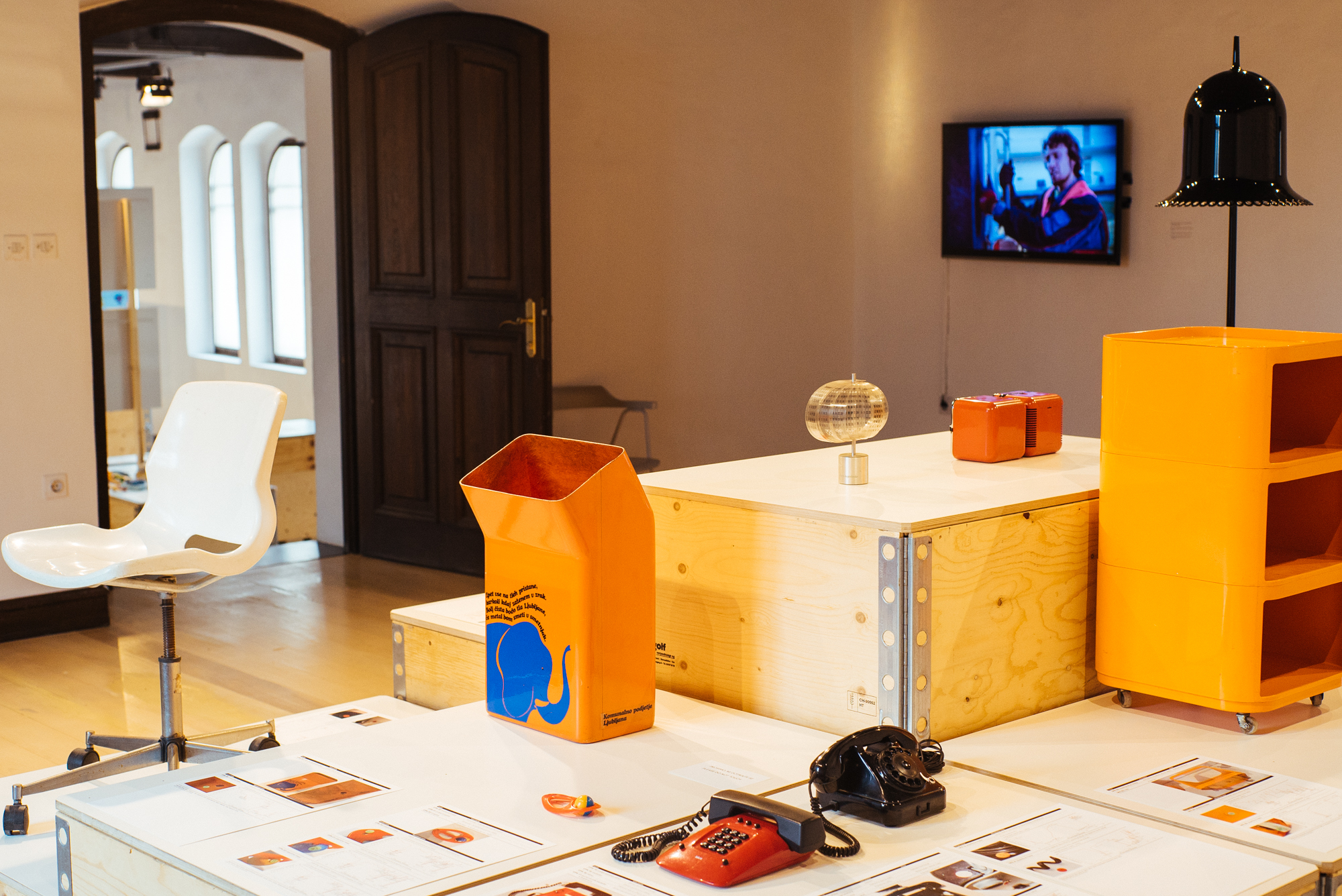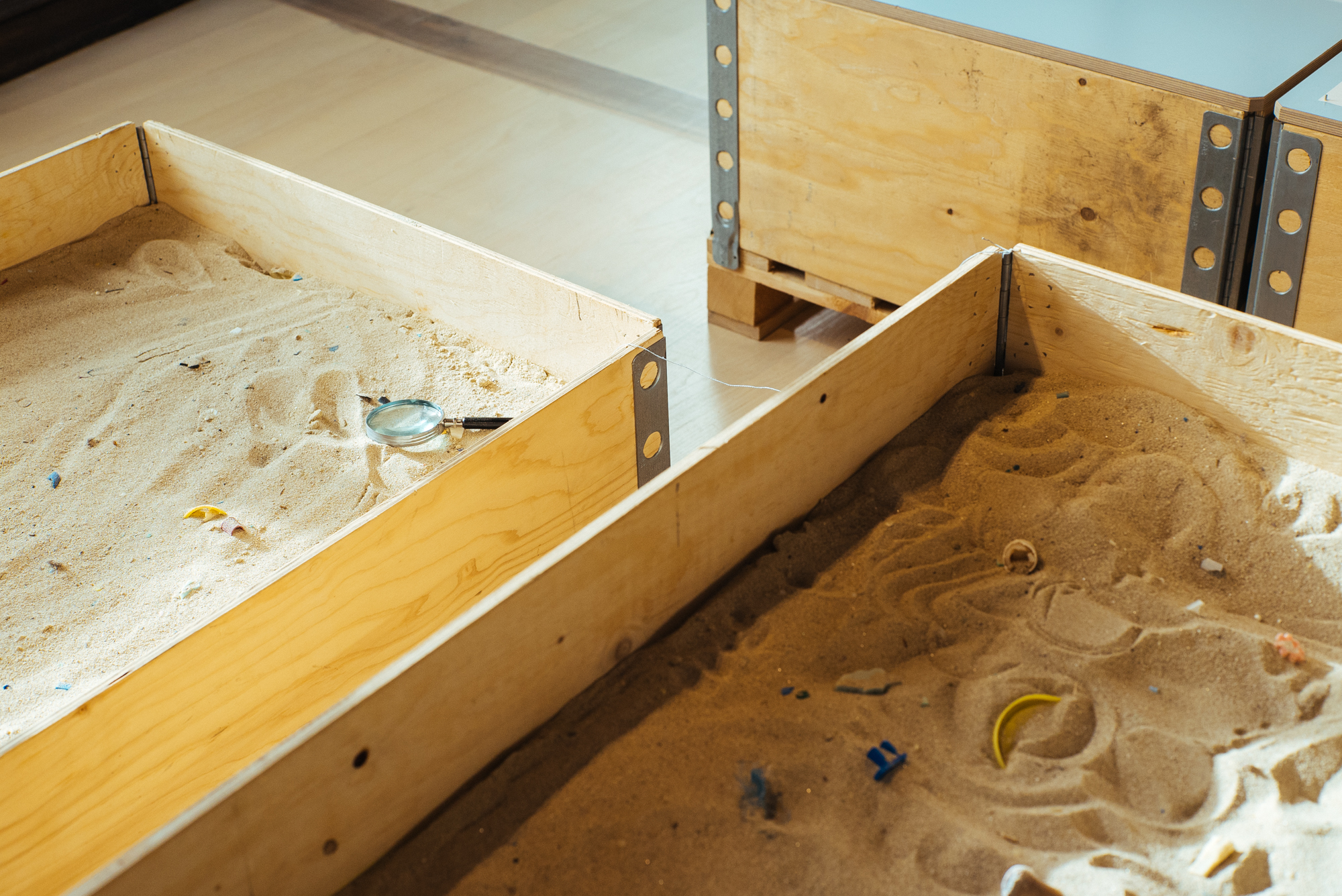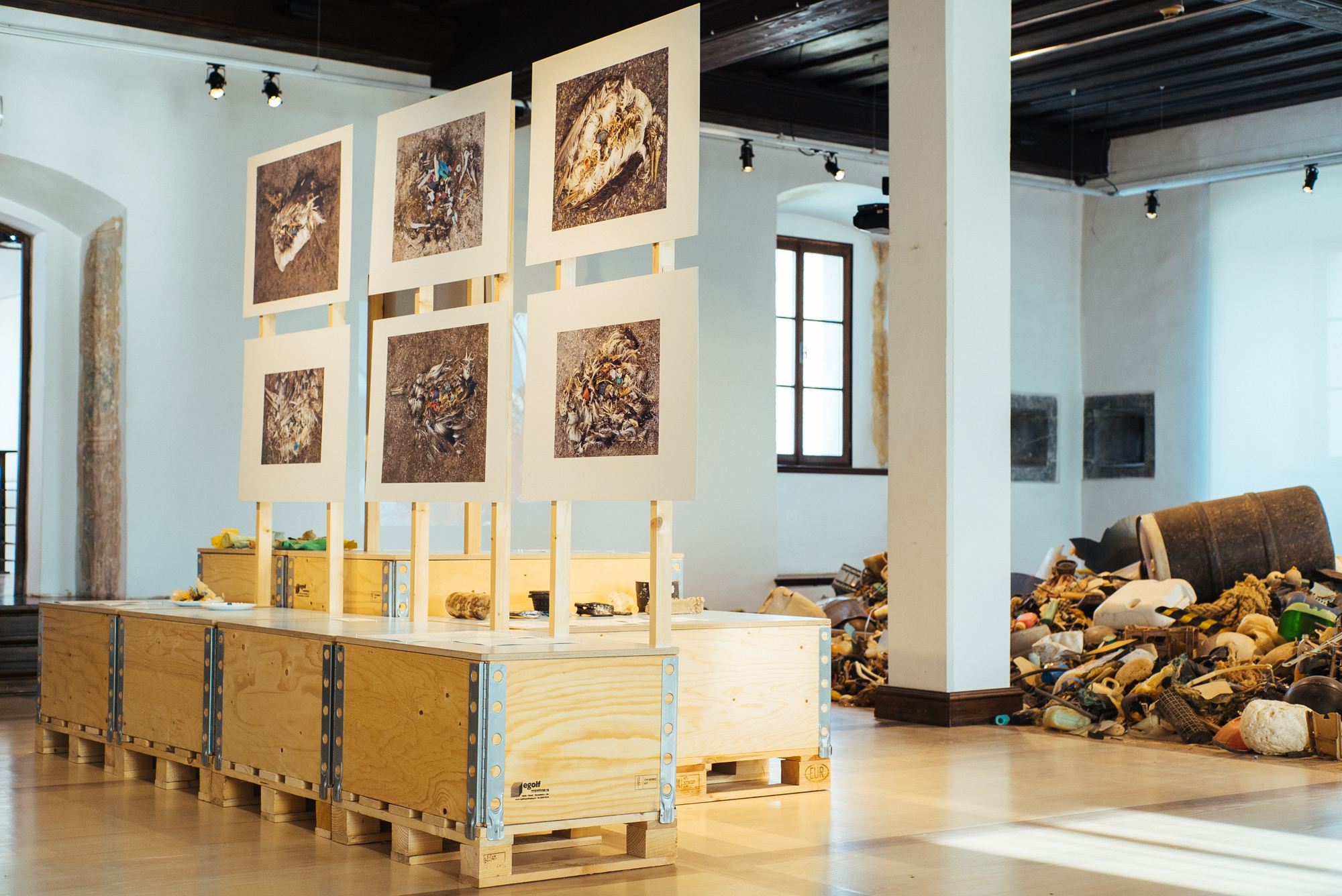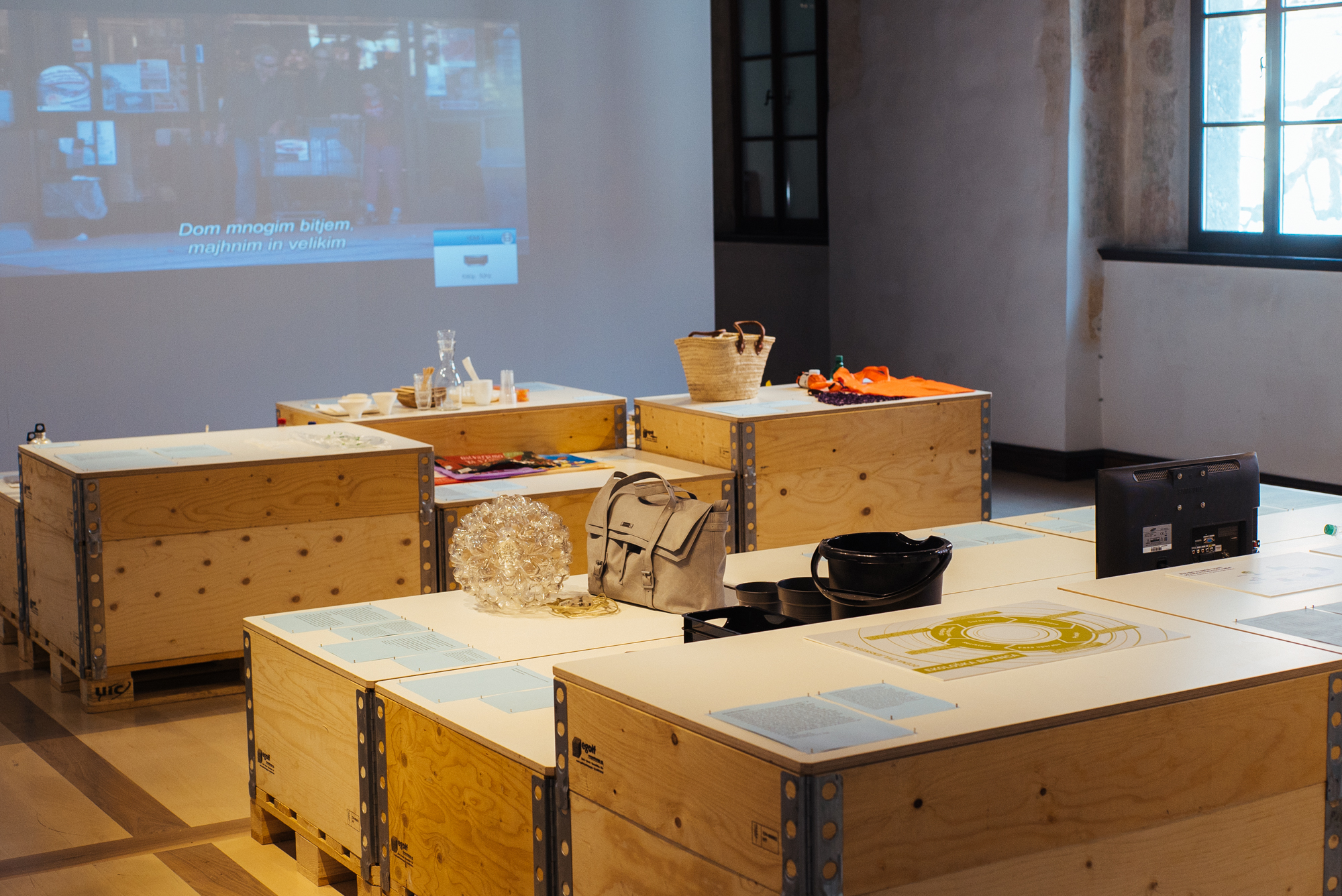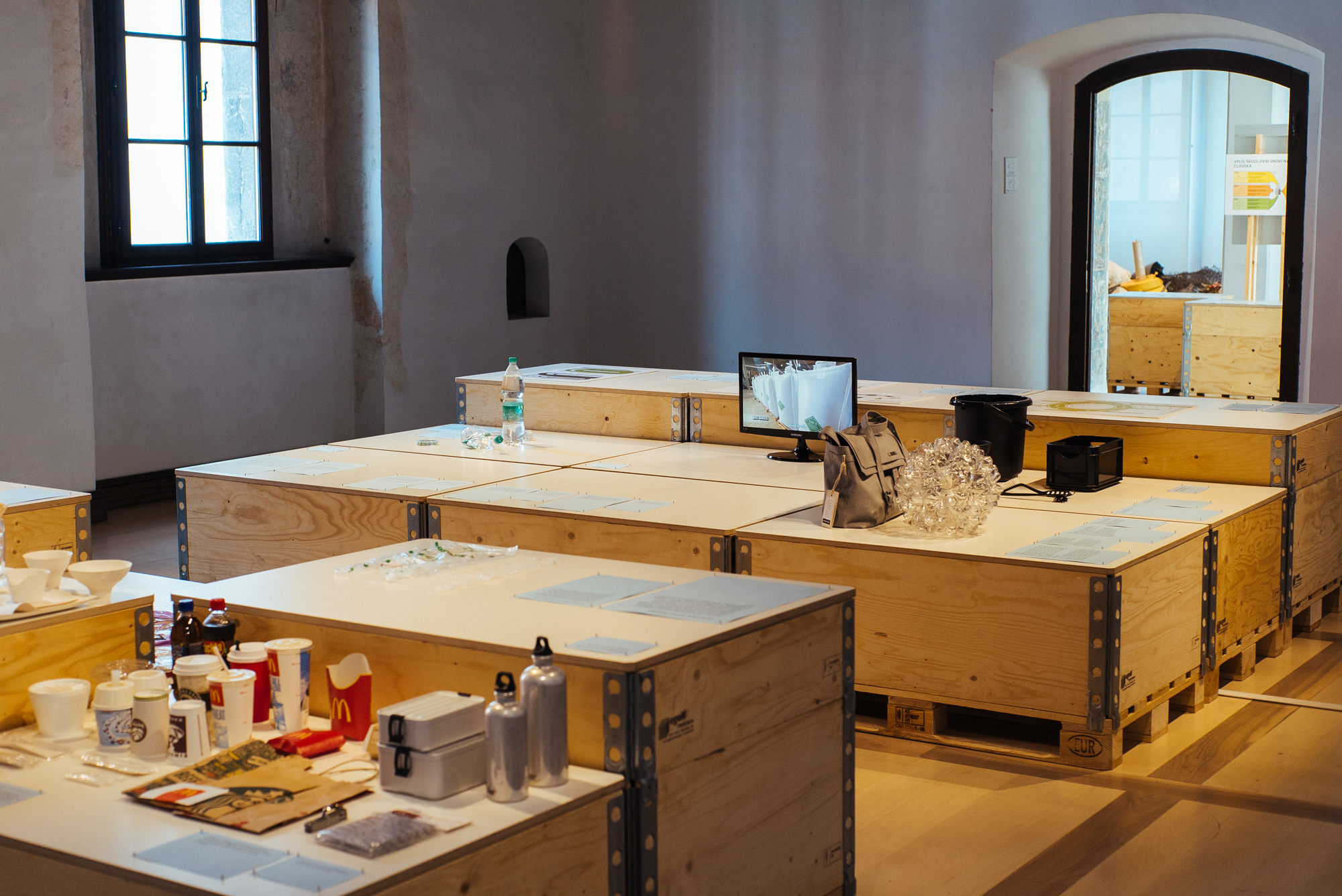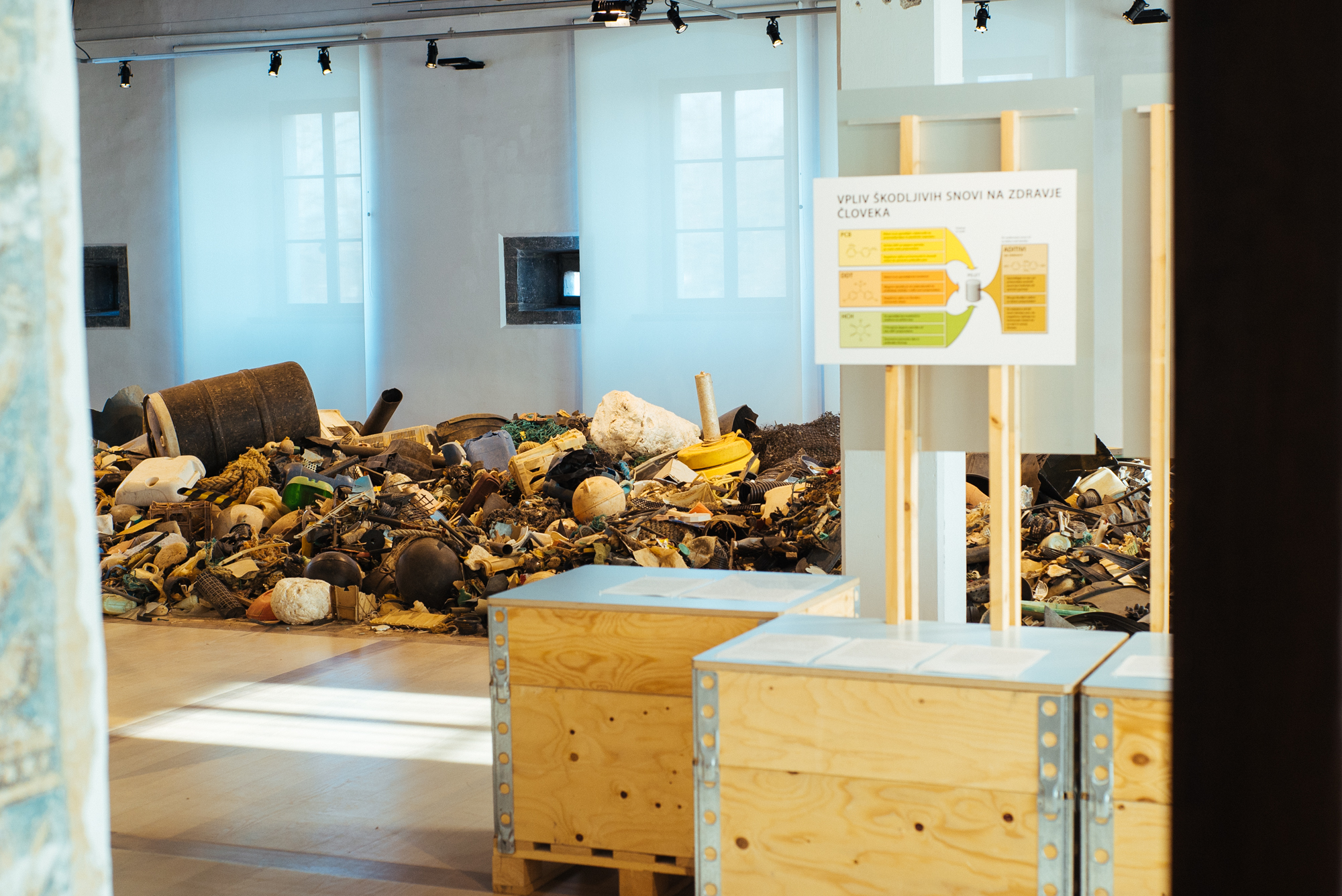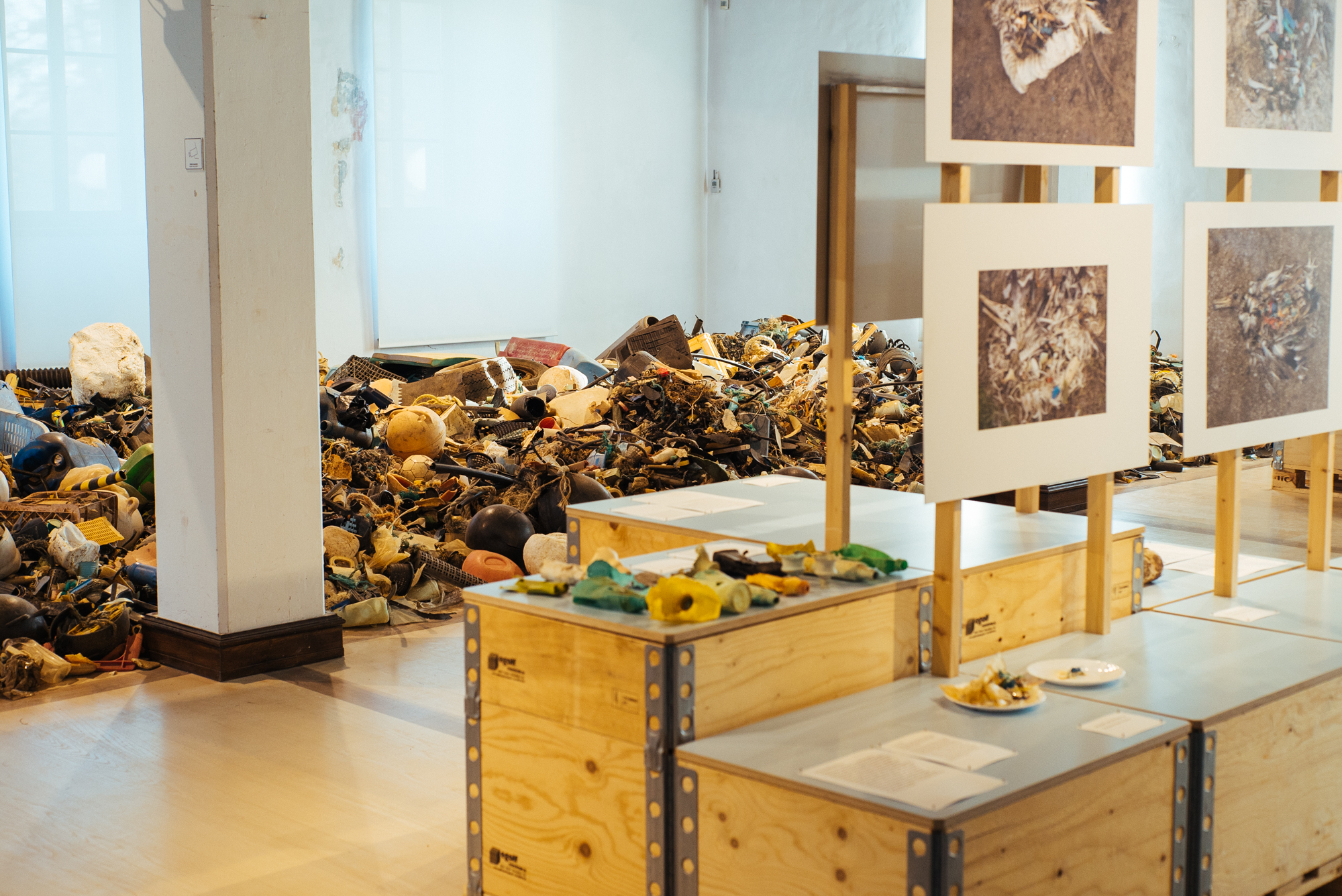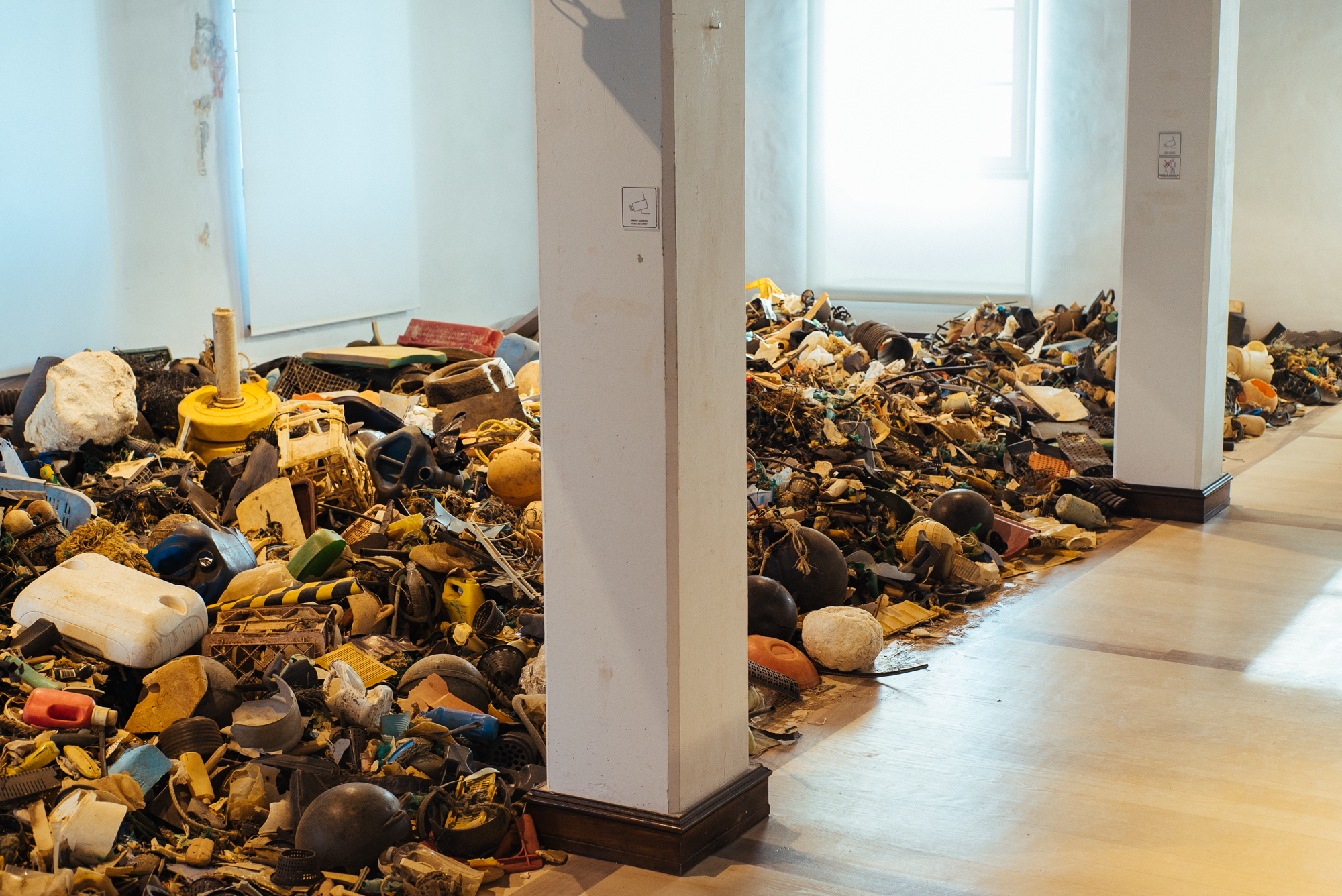Museum of Architecture and Design
Ljubljana, slovenia
8 December 2016 – 23 April 2017
Plastic bags, children’s toys, PET bottles, food packaging… since the beginning of the 20th century this mineral oil based product has advanced triumphantly through the world of consumption. Its advantages are obvious: it is cheap, easy to process and can be given almost any qualities required. Our everyday lives are filled with plastic. But what happens to a plastic product at the end of its life cycle? A large proportion of these products – every year more than 6.4 million tons – lands unchecked in our environment and, ultimately, in our seas, which are gradually being transformed into a global plastic soup. Already today not a single square kilometer of seawater is free of pieces of plastic.
The exhibition turns the focus on the end of the design history of useful objects: the center of the exhibition Out to Sea? and the symbol of the ecological catastrophe is an installation of plastic flot-sam from the world’s various seas. MAO has prepared an accompanying exhibition with a focus on artificial materials and the properties of these materials presented through the selection of plastic items from the museum collections of industrial design. In the field of restoration and conservation plastic presents a major challenges, because it is a relatively new material. Because museums want to preserve historical items, they could use the research and knowledge from ecology and nature-preservation.
Accordingly this exhibition places special emphasis on the education program. Publications, websites, studies, films and projects are presented.
The Museum of Architecture and Design (MAO) established in 1972 is one of the leading museums dedicated to architecture and design in Central and Southeast Europe. Over the last years, MAO has become a meeting point, as well as a platform for engagement, confrontation and democratic dialogue on the artistic, ecological, social, economic, political and other sides of architecture and design. MAO aims to strengthen its position by creating quality programmes, continuously developing and adding to the museum's collections, making its contents fully accessible to a diverse public and by opening the museum to different forms of cooperation. The museum serves as a venue for a broad range of exhibitions and events, with a focus on the heritage that MAO keeps in its architecture and design collection. The museum is located in Fužine Castle, Ljubljana's only mansion that has retained its original Renaissance character.
